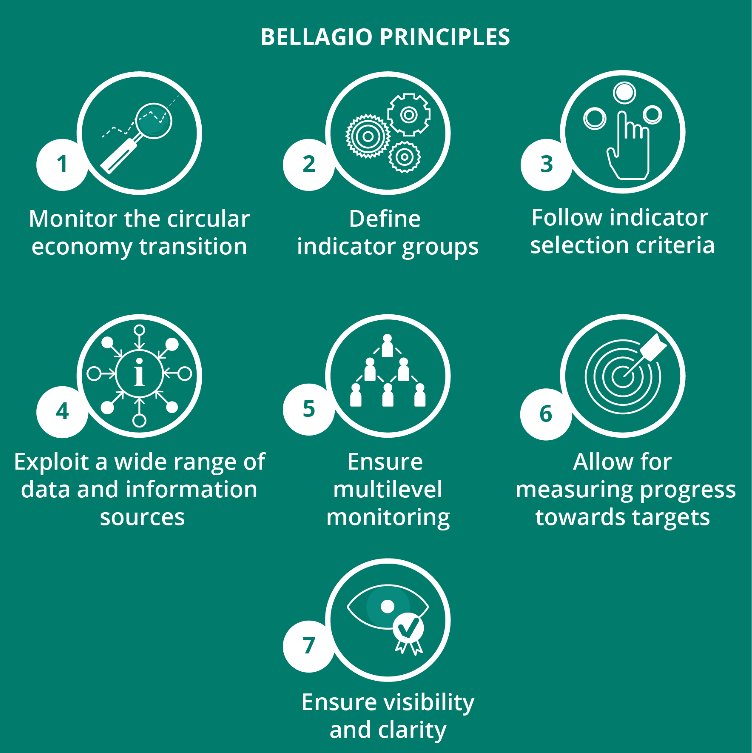Europe is progressively moving away from a model of production of consumption that is linear where materials from the Earth are taken, then transformed into products, and ultimately are thrown away as waste to a circular model where materials are kept in use longer and made into new products again after use. The European Commission's circular economy action plan offers the overall framework for initiatives to foster a circular model.
Understanding whether and how this is happening, the areas where progress lacks and identifying best practices are key to accelerating that transition. The 'Bellagio Process' is an international dialogue that agreed upon a set of principles on how to ensure that monitoring the transition to a circular economy captures all relevant aspects and involves all relevant parties. It serves to also guide national and European authorities in the development of monitoring frameworks and indicators.
The Bellagio Declaration
The Bellagio Declaration contains seven principles and was endorsed, in December 2020, by the Heads of the Environment Protection Agency of Germany, France, Slovakia, Switzerland, the Netherlands, Austria, Italy and the EEA. The full document endorsed by these countries is accessible here.

Monitoring systems in place
The European Commission and Eurostat have established a framework to monitor progress towards a circular economy using available statistical data. The European Circular Economy Monitoring Framework focuses on aspects of the circular economy related to resource use and waste management. Aspects related to maintaining the value of products and materials for longer — such as design for circularity, repair, reuse and circular consumption — are not yet included. The circular economy action plan aims to improve the current monitoring system. All key aspects of the circular economy should be included in the monitoring system to fully capture progress and inform decision-makers.
EEA indicators related to the circular economy
The EEA is investing in improving the knowledge base on the circular economy, as a result of the Bellagio Process. At this point, six EEA indicators cover aspects of this agenda:
Cover photo: © Scott Graham on Unsplash

Document Actions
Share with others